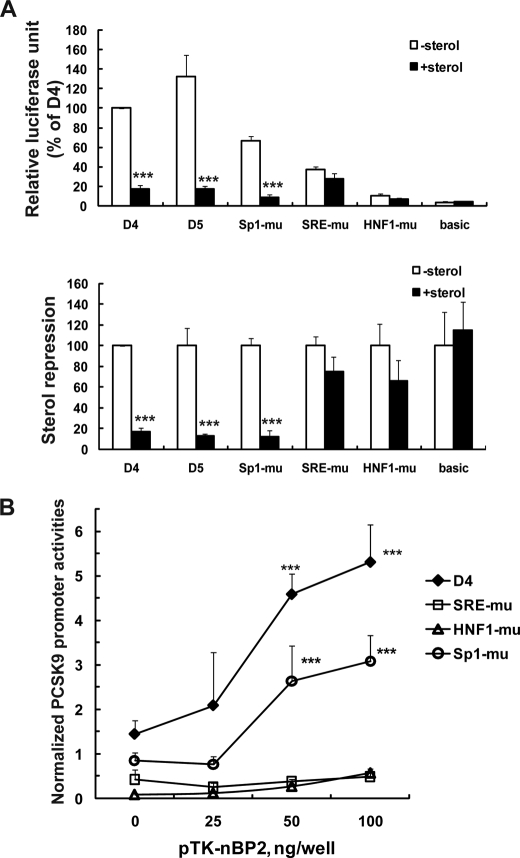FIGURE 4.
Examination of responses of the wild-type and mutated vectors to sterol suppression and SREBP2-mediated transactivation of PCSK9 promoter. A, reporter constructs were cotransfected with a Renilla expression vector (pRL-SV40) into HepG2 cells. One day post transfection, cells were cultured in medium supplemented with 10% LPDS or LPDS plus cholesterol (10 μg/ml cholesterol plus 1 μg/ml 25-hydroxycholesterol) for 24 h prior to cell lysis to measure dual luciferase activities. After normalization, the luciferase activity of each vector is expressed as the percent of the luciferase activity of the D4 vector without sterols (upper panel). In the lower panel of A, the luciferase activity of each vector in the absence of sterols is expressed as 100%. The relative luciferase of each vector in the presence of sterols was compared with that in the absence of sterols. Each value represents the mean ± S.D. of four independent transfection experiments in which triplicate wells were assayed. ***, p < 0.001. B, HepG2 cells were cotransfected with indicated PCSK9 luciferase reporters with different amounts of pTK-nBP2. Total amounts of transfected plasmids were adjusted to 0.2 μg/well with a mock vector. Dual Luciferase activities were measured as described in A. Each value represents the mean ± S.D. of six wells per condition. ***, p < 0.001 as compared with 0 ng/well pTK-nBP2. The data shown are representative of three separate transfections with similar results.

